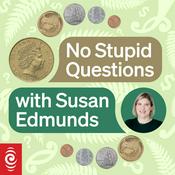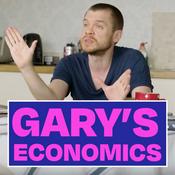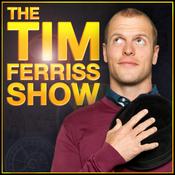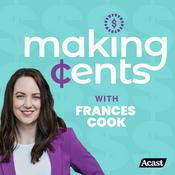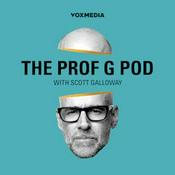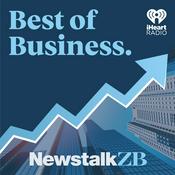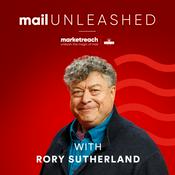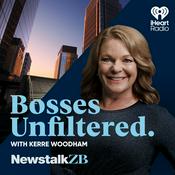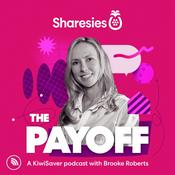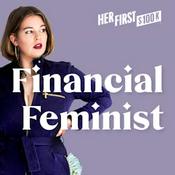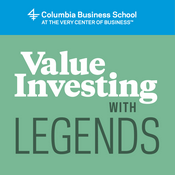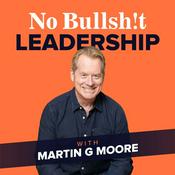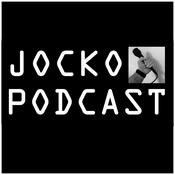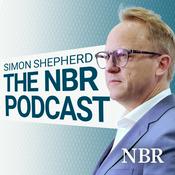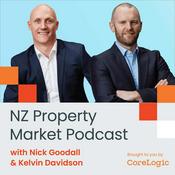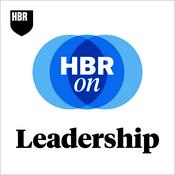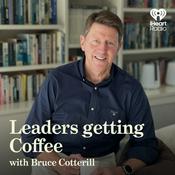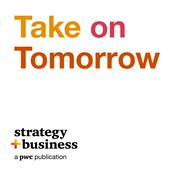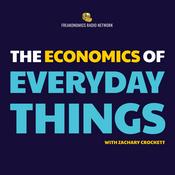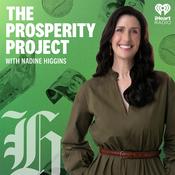96 episodes

Special Episode - SenseHub Dairy: Innovating the Way We Manage Cows
17/12/2025 | 26 mins.
This special episode of Dairy Country, powered by MSD Animal Health, dives into how SenseHub Dairy is reshaping modern herd management through real-time insights and connected on-farm technology. Taranaki farmer Ed Whiting shares how adopting SenseHub Dairy has transformed the way he and his family run their system, lifting animal health, streamlining decision-making, and giving them greater confidence through timely, accurate data. Alongside Ed, West Coast sharemilker Terry Swney explains how the technology supports heat detection and herd performance in a challenging climate, while South Island team leader Laura Christensen offers a behind-the-scenes look at the tools farmers are using to monitor rumination, young stock, and milk-quality trends. Host: Sarah Perriam-Lampp, CEO, CountryWide Media Guests: Ed Whiting, Taranaki farmer Terry Swney, West Coast sharemilker Laura Christensen, South Island Sales Lead, SenseHub Dairy Ed Whiting reflects on his journey in adopting technology on his Taranaki farm and how SenseHub Dairy has transformed the way he manages his herd. Farming a mixed operation with 400 cows, 300 beef calves, and a large free-range broiler chicken enterprise, he shares how real-time insights into heat, health, rumination, and milk quality have shaped his approach to herd management and decision-making. He talks about integrating collars, milk meters, and young stock tags across his operation, fine-tuning feeding regimes, preventing metabolic issues, and monitoring every cow individually. Ed also discusses the value of using technology to connect his team, improve workflow, and make smarter decisions on farm, and encourages other farmers to embrace incremental steps when adopting new systems: start with one tool, learn, and expand from there. Terry Swney reflects on stepping up to share milking on his West Coast farm and how SenseHub Dairy has helped him manage a 635-cow operation more efficiently. Operating in a low-stocking-rate, pasture-based system, he shares how collars and young stock tags have guided his approach to heat detection, animal health, and rumination, helping him make better decisions while saving time in the shed. He talks about how the technology has allowed him to fine-tune feeding, prevent health issues, and monitor young stock development, while also highlighting the importance of reliable support and guidance from the SenseHub Dairy team. Terry encourages other farmers to adopt new systems step by step, focusing on learning and practical benefits rather than feeling overwhelmed by the data. Laura Christensen shares her perspective as MSD Animal Health’s South Island Sales Lead for the SenseHub Dairy brand about how the technology is helping farmers across diverse environments make smarter decisions. She explains how customisable solutions from heat detection and milk monitoring to young stock tracking support herd health, reproductive performance, and feeding management, even in remote or challenging conditions. Laura also highlights the importance of ongoing support, on-farm training, and practical guidance to ensure farmers can confidently integrate technology into their systems. She encourages farmers to approach adoption step by step, focusing on meaningful insights and improvements for individual animals and overall herd performance.See omnystudio.com/listener for privacy information.

Episode 92 - Precision Dairy Farming Conference: AI Transforming Farms
11/12/2025 | 52 mins.
The future of dairy is data-driven, with New Zealand farmers exploring how artificial intelligence (AI) and digital tools can transform efficiency, animal welfare and sustainability. In this episode, Anne Lee speaks with Cameron Henderson, DairyNZ deputy chair and North Canterbury dairy farmer, Peter Morgan, Waikato dairy farmer, Dr Joao Dorea, Assistant Professor at the University of Wisconsin–Madison, USA, and Dr Claudia Kamphuis from Wageningen University in the Netherlands. They share insights from the Precision Dairy Farming Conference in Christchurch, discussing the role sensors, computer vision, drones and AI are having on farm decision-making, the rise of ‘digital twins’, and the importance of co-design, collaboration and local skills to turn research into practical solutions for New Zealand’s pastoral system. Host: Anne Lee, Senior Journalist, Dairy Country Guests: Cameron Henderson, DairyNZ deputy chair and North Canterbury dairy farmer Peter Morgan, Waikato dairy farmer Dr Joao Dorea, Assistant professor, University of Wisconsin Madison, USA Dr Claudia Kamphuis, Researcher, Wageningen University, Netherlands Cameron Henderson, DairyNZ deputy chair and North Canterbury dairy farmer, reflects on the Precision DairyFarming Conference in Christchurch and the rapid rise of AI and data-driven tools in New Zealand dairying. He highlights the potential of AI across all aspects of the farm, from effluent and environmental management to herd and staff performance, while stressing the importance of adapting international innovations to New Zealand’s unique pastoral system. Cameron emphasises co-design with farmers to ensure new technologies are practical, integrated and deliver real value, and underscores the need to develop local skills to maintain competitiveness as digital tools reshape decision-making on farms. Peter Morgan, Waikato dairy farmer, highlights how the shift from limited information to constant data streams is transforming decision-making on dairy farms, with better data quality, actionable insights and practical use improving efficiency, animal welfare and performance. He discusses new tools like sensors, wearables and computer-vision systems, the importance of involving farmers in research and design to ensure technology fits real farm needs. He talks about his own use of AI to help formulate options and to help with decision making onfarm, chat bots and the use of AI agents. Dr Joao Dorea, Assistant Professor at the University of Wisconsin–Madison, USA, shares insights from his keynote address, exploring how AI and advanced sensors are transforming livestock monitoring. He explains how computer vision, wearable sensors and drones can be integrated to track individual animals, measure body condition, behaviour and growth, and improve predictive models. Joao highlights how this technology can reduce the need for manual handling, support management decisions, and enhance sustainability by enabling accurate estimates of feed intake and carbon footprint. He also emphasises the importance of rigorous research and data collection to ensure models are reliable and practical for onfarm use. Dr Claudia Kamphuis, a researcher from Wageningen University in the Netherlands discusses how precision dairy research has evolved from monitoring animal health and labour efficiency to using AI, machine learning and computer vision to handle complex data. She explains the concept of digital twins or digital models of farms, and how they can support onfarm decision making, while noting much of this technology is still in the research stage and depends on companies to develop practical applications. She highlights the need for collaboration between animal scientists, plant scientists and data experts to make sense of large data volumes.See omnystudio.com/listener for privacy information.

Episode 91 - Net Zero Pilot Dairy Farm
04/12/2025 | 39 mins.
The race to a net zero dairy farm is on, with Taranaki’s Net Zero Pilot Dairy Farm trialling ways to lower emissions while maintaining profitability. In this episode, Anne Lee speaks with Dr Talia Grala from Fonterra’s On-Farm Excellence team about the progress at the Net Zero Pilot Dairy Farm in Taranaki. The 250ha farm is a partnership with Nestlé and is run in conjunction with Dairy Trust Taranaki. The aim is to achieve a commercially viable net-zero system by 2032. Host: Anne Lee, Senior Journalist, Dairy Country Guest: Dr Talia Grala, Programme Manager, Fonterra Talia outlines what’s been behind another 4.5% cut in emissions intensity to bring the total emissions intensity reduction to 9.5% compared with the baseline 2021/22 season. She talks about the impact of gains in animal efficiency, the use of sexed semen in reproduction, the benefits of improving animal health and the increase in production resulting from a shift back to twice-a-day milking after using a flexible milking regime the previous season. Talia explains the impact on total emissions of the increased production along with the effect of supplement type. A trial of the EcoPond technology on the farm last season showed it slashed methane emissions from effluent by about 97% and the farm will scale up the use of the technology this season. Talia also shares more about the farm’s innovative silvopasture trial where trees are planted in a grid-like pattern across grazed pasture.See omnystudio.com/listener for privacy information.

Episode 90 - Behind the Numbers: South Island Dairy Sales
27/11/2025 | 44 mins.
The South Island dairy land market is heating up, with a record $87,000/ha paid at auction for a Canterbury dairy farm in November. In this episode, Anne Lee speaks with Paul Mills, director and valuer with Property Advisory, about the momentum in South Island dairy land sales and the shifts shaping this season’s market. He reflects on the lift in Canterbury’s top-tier values, standout sales including the Kyle Park auction, trends across other regions and changes in lending appetite from banks. Paul talks about farmer confidence in Fonterra’s strategy, implications of land prices on succession and farmer expectations for returns on investment. Host: Anne Lee, Senior Journalist, Dairy Country Guest: Paul Mills, Director, Property Advisory Canterbury Paul Mills reflects on recent trends in the South Island dairy property market, sharing his insights on what is driving rising values and heightened activity this season. He explains how strong milk prices, Fonterra’s return of capital to farmers and confidence in the co-op’s strategy are underpinning an optimistic outlook. He digs into the numbers and points out that tier one farms with modern, well-maintained infrastructure are commanding premium prices. Paul discusses standout sales, including the Kyle Park auction, and explores regional differences across Canterbury, North Otago, South Otago, and Southland, as well as the levels of demand across a range of property categories. He talks about the practical and financial realities of dairy conversions and discusses implications rising land values have for succession. He highlights the influence the state of infrastructure can have on values and discusses return on investment. For anyone navigating the current market - buyers or sellers - it’s important to know your numbers and understand your options.See omnystudio.com/listener for privacy information.

Episode 89 - Farming for People, Profit, and the Planet
20/11/2025 | 38 mins.
North Canterbury dairy farmer Stuart Neill, winner of the 2025 Canterbury Supreme Award at the Ballance Farm Environment Awards, reflects on the long-term changes that have shaped his business. Farming 200 hectares near Culverden, he has built a resilient, pasture-focused system anchored in simplicity, environmental stewardship, and strong people management. In this episode, Anne Lee speaks with Stuart about the journey behind the award, the evolution of irrigation on the farm, and the environmental gains from redesigning old tile drains and restoring waterways. They also discuss flexible milking, building a system that works for both cows and staff, and his message to other farmers: meaningful change happens when you’re willing to step back, rethink, and keep improving. Host: Anne Lee, Senior Journalist, Dairy Country Guest: Stuart Neill, 2025 Canterbury Supreme Award Winner Stuart Neill reflects on his journey as a North Canterbury dairy farmer and celebrates winning the Supreme Award at the 2025 Canterbury Ballance Farm Environment Awards. Farming on The Mound, he shares how managing 200 fully irrigated hectares with a focus on grass-based milk production, sustainable irrigation, and innovative pasture management has shaped his approach to farm leadership. He talks about the environmental initiatives that have defined his career, from converting border-dyked paddocks to spray irrigation, improving water quality through open drains and strategic plantings, to adopting a 10 (milkings)-in-seven (days) flexible milking system that balances cow health, reproduction, and staff wellbeing. Stuart also reflects on the importance of people, from building the Amuri Employers Group to mentoring staff and fostering strong partnerships, and offers insight into creating a resilient, profitable, and environmentally responsible farm system.See omnystudio.com/listener for privacy information.
More Business podcasts
Trending Business podcasts
About DAIRY Country
Listen to DAIRY Country, No Stupid Questions with Susan Edmunds and many other podcasts from around the world with the radio.net app
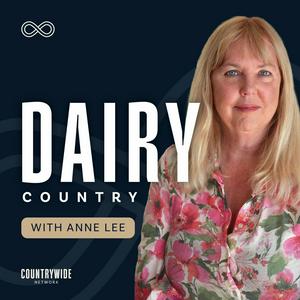
Get the free radio.net app
- Stations and podcasts to bookmark
- Stream via Wi-Fi or Bluetooth
- Supports Carplay & Android Auto
- Many other app features
Get the free radio.net app
- Stations and podcasts to bookmark
- Stream via Wi-Fi or Bluetooth
- Supports Carplay & Android Auto
- Many other app features


DAIRY Country
download the app,
start listening.
